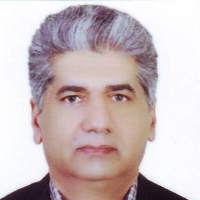The Chronology of Kon-e Binoo (Tel-e Guvineh) on the Basis of Potteries Collected via Systematic Survey
Author(s):
Abstract:
Although numerous archaeological activities carried out in Khuzestan over last century, but less attention has been paid to the eastern parts, including the Behbahan. doing a systematic study on one of the major sites of the region is essential due to the geographical location and suitable environmental conditions such as: permanent rivers, fertile plains and communications and commercial position of the city and existence of many monuments and archaeological sites of different cultural periods in contrast to the lack of a comprehensive archaeological information from different cultural periods. Kon-e Binoo (Tel-e Guvineh), is the largest site which has been identified in Zeidoon plain on the Zohreh River bank contains several cultural period. A systematic survey of the area was conducted in 2012 using systematic classified sampling. The importance of the site during various cultural periods is visible by a large amount and variety of surface finds and cultural material. Here, more than 250,000 culture finds have been studied such as: pottery, stone tools and equipment, stone vessels, pendants and metal and rocky decorative beads, coins, metal and glass objects and ornaments, figurines, seals, arrowheads made of stone and metal, pieces of glass wares, metal slag and weld furnace, architectural remains, pottery kilns, workshop of stone tools and etc. Comparing the finds, especially pottery and chronology of the site is very important in recognition of the cultural sequence of the region. This could pave the way for future studies, including recognition of inter-regional cultural interactions. In this paper, the main question is: Kon-e Binoo by which episode of time has been settled? So, in this regard, it has been tried to consider the chronology and recognize its settlement period based on the results of typological and comparison of ceramic samples obtained from a systematic survey. Pottery studying shows that this site has occupied as early as the 6th millennium B.C. and continued in some parts of the site as early as 4th millennium B.C. This indicates that in this period large number of population were living in the region. Possibly afterward, an interruption on the settlement by the early 2nd millennium B.C. has occurred. According to pottery evidences, due to the rarity of data, almost nothing attributed to the first half the 4th and 3rd millennium B.C. It will be clear by digging in the site. Once again, part of the site has been populated in the Old Elamite period. It might be said that it has been converted to a city by Elamite from the old Elamite period and reaches its climax in the middle and New Elamite period. It has been also populated during Achaemenid, Seleucid, Eliemaied and Sassanid. Almost all of the area have been inhabited in the Islamic era. Doubtless, it could be one of the most important cities of Behbahan region in the Sassanid Islamic period due to the large amount of findings. But the population was decreased the extent of settlements in the Middle Islamic Ages and then, reoccupied by Late Islamic centuries, Safavid. After this period, the site of Tel-e Guvineh is abandoned forever.
Keywords:
Language:
Persian
Published:
Iranian Archaeological Research Journal, Volume:5 Issue: 9, 2016
Pages:
87 to 106
https://magiran.com/p1507325
دانلود و مطالعه متن این مقاله با یکی از روشهای زیر امکان پذیر است:
اشتراک شخصی
با عضویت و پرداخت آنلاین حق اشتراک یکساله به مبلغ 1,390,000ريال میتوانید 70 عنوان مطلب دانلود کنید!
اشتراک سازمانی
به کتابخانه دانشگاه یا محل کار خود پیشنهاد کنید تا اشتراک سازمانی این پایگاه را برای دسترسی نامحدود همه کاربران به متن مطالب تهیه نمایند!
توجه!
- حق عضویت دریافتی صرف حمایت از نشریات عضو و نگهداری، تکمیل و توسعه مگیران میشود.
- پرداخت حق اشتراک و دانلود مقالات اجازه بازنشر آن در سایر رسانههای چاپی و دیجیتال را به کاربر نمیدهد.
In order to view content subscription is required
Personal subscription
Subscribe magiran.com for 70 € euros via PayPal and download 70 articles during a year.
Organization subscription
Please contact us to subscribe your university or library for unlimited access!



